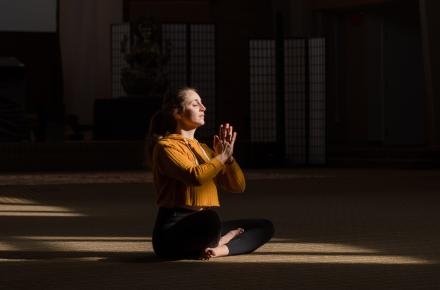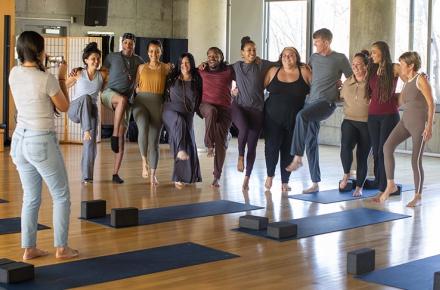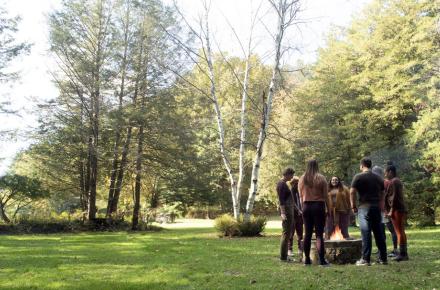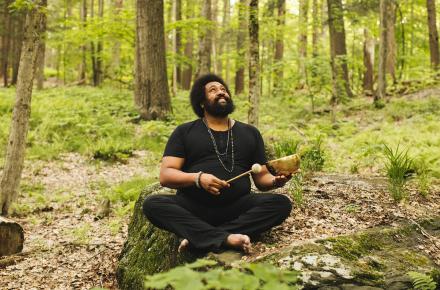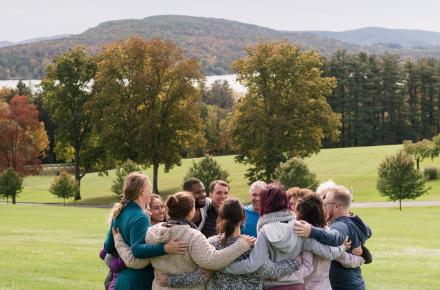Weaving a Life

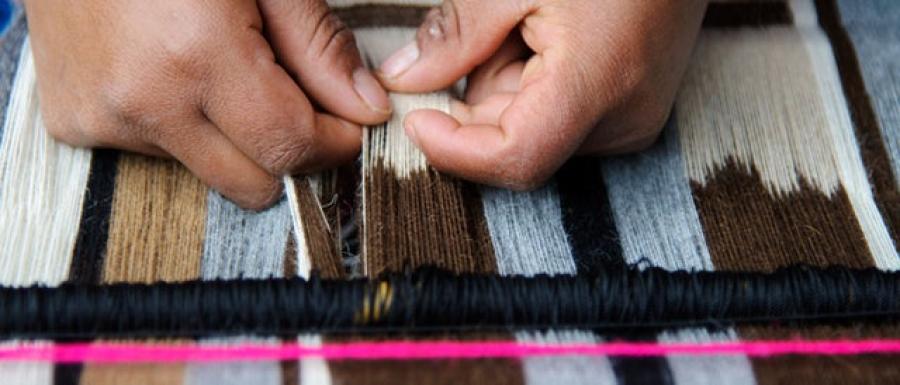
For as long as I can remember, I have wanted to weave. I made dozens of potholders as a kid, weaving colored loops of fabric on a small, square, metal frame someone gave me as a gift. Those potholders sparked an abiding interest. I knew―with that gut-level certainty reserved for only a small number of pursuits―that one day I would own a real loom and learn how to use it.
Then life took over. School, career, and marriage consumed all my time and energy. I discovered yoga and began writing poetry. Both were creative and healing outlets, and in my busy life there wasn’t time to do anything more than occasionally notice that the urge to weave was still with me, a desire that remained unfulfilled, but never completely disappeared.
Leap ahead to an Art for Gifts sale in December of 2010, where my husband and I admired the shawls, scarves, towels, and table runners created by a local weaver. Aware of my interest, my husband secretly jotted down the weaver’s name and phone number, and called her the next day. Would she be willing to teach a beginning weaver? Indeed, she would.
That Christmas, one of my gifts was an envelope with my husband’s printing on the outside flap. It read: “Don’t open this unless you want to change your life!” Inside was a card with the name, address, and phone number of the weaver, along with my husband’s pledge to pay for unlimited weaving lessons.
From our first meeting, Roberta Hamlin felt like a long-lost friend. She’d been weaving for 40 years, had five looms in her house, and was a patient, easygoing teacher. She believed that perfection was overrated, and every mistake was an opportunity to learn. Roberta sat me down, showed me the basics, taught me how to follow a simple pattern, and turned me loose to weave.
I was in heaven. Something about the repetitive motion of shuttle and beater, the sound of the wooden shafts as they raised and lowered, and the colorful expanse of fabric taking shape before me was tremendously satisfying. I spent three hours with Roberta that first afternoon, returning home with a kitchen towel to show for my efforts.
Over the next six months, I learned each step in the weaving process by watching Roberta demonstrate how she did it, and then trying it myself. I bought a secondhand loom, and she came over to help me put the first warp threads on. Now that I could weave at home, I savored the process even more.
What was it about weaving that so lit me up every time I had 20 spare minutes to devote to the craft? Well, for starters, there was the thread. The first time I visited a weaving store, I nearly wept in ecstasy at the colors. Immersed in a rainbow that varied in texture from silk to chenille, cotton to wool, mohair to linen, I wanted to buy everything. I had to rein in this impulse and only purchase the three cones of thread I actually needed to weave placemats for friends that we would be visiting in six weeks.
This would be my first solo project. Roberta was on call, but I would attempt each step of the complex weaving process myself. It seemed like magic that these cones of thread could end up as placemats. I got to choose color, texture, size, and pattern. I could add borders if I wanted, or leave the placemats plain. The creative process was multi-layered, and involved everything from mathematical calculations to subjective aesthetic decisions.
In the center of my loom, fabric materialized in what had been empty space, growing longer and more lovely with each throw of the shuttle. I was used to creating poems from nothing, weaving words into phrases and stanzas, but this cloth wasn’t metaphoric―it was tangible. I could see it taking shape, thread by thread and inch by inch. I could run my hands across the surface of the placemats and feel the pattern variations.
At one point in my younger life, I wrote myself into being, using the act of writing to shed light on my hidden interior life. Now I sat at my loom and wove a set of placemats, the very act a creative leap of faith, a statement that even nearing my sixtieth birthday, I could learn a whole new set of skills and put those skills to work in a practical and fulfilling way.
I was weaving a happier me into being, learning to balance my writing life with a craft that resulted in a tangible creation I could give as a gift. I was harmonizing head and hands, words and thread. I made lots of mistakes in those placemats, but Roberta had taught me to fix the mistakes I could, and laugh at the ones I couldn’t. “You can’t tell a piece of fabric is handmade unless it has a mistake in it,” she told me more than once.
It seemed to me that Roberta’s advice translated well to life in general―if I could learn from my mistakes and get a good laugh out of the obvious ones, life was a lot more fun. And when I gave the placemats to our friends, complete with the caveat that I was a freshly-minted weaver, their eyes were drawn to the colors and thread patterns, not the errors. What they received was the enjoyment that I wove into every inch and the love that flowed out from that enjoyment.
Even after 18 months of weaving, I’m still very much a novice. I learn something new each time I spend an afternoon at Roberta’s. And whenever I have 20 spare minutes, the magic of weaving captivates me all over again. Whether I’m making a hand towel or a shawl, the creative process widens my horizons every time. My yoga and writing practice makes me more mindful of the nuances of color and the changing afternoon light as it plays on the threads. Weaving relaxes me and enriches my poetry by leaving me open to creative inspiration.
I deferred my dream of owning a loom and learning to use it for a very long time, but now I’m weaving a life that feels just right.
© Kripalu Center for Yoga & Health. All rights reserved. To request permission to reprint, please e-mail editor@kripalu.org.












